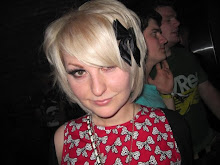Never go past 0 DB.
Carefully monitor every process to ensure the levels never creeps past 0DB, this tends to happen more when using heavy limiting in dubstep, but can also happen with aggressive EQ.
A/B Properly.
An easy mistake to make is to make poor judgments by A/B testing to quickly. For example, when applying compression the better setting might not sound so good initially because its not as loud. However once normalized its would be the superior setting. Also A/B test by quickly switching between two or three of your favorite dubstep tracks to see how those producers do things.
Get your dubstep studio as quiet as possible.
Although good dubstep monitoring equipment is essential, it can be wasted money if your room is not set up properly. Some quick and easy tips are to get silent fans in your computer, and invest in some acoustic tiles to dampen pre-delay and early reflections. Essentially your room will be acting like a reverb plug-in unless you add some kind of sound dampening. This can result in over, or under use of EQ.
Test, Test, Test against other dubstep tracks.
A good idea is to listen to your efforts on as many systems and spaces as possible and pay close attention to the results. Over time this will teach you how your mix translates over multiple systems, although to perfect can take more than a lifetime. This is why a mastering engineer is worth his weight in gold. Or printer ink (as thats more expensive than gold!).
Learn the frequencies.
This might sound obvious, but building a mental picture of the dubstep frequency range in your head will pay dividends in all areas of dubstep production. In my view it maybe the most important thing in getting you mix and mastering efforts right. Try and attach words to each area, like warmth (220-320), muddiness (340), knock (600-1k), clarity (4k-7.5k) etc.
Cut it out.
When mixing / mastering dubstep (forget sonic sculpting) its nearly always better to make a frequency cut, rather than a boost. This is because the human brain will deem a sound more natural sounding by using a cut because that is what happens in the real world, sounds are absorbed by different materials (like wood, and concrete) resulting in certain frequencies being removed. Therefore when boosting EQ the brain will not be as used to it as a frequency cut. A good trick if you do want to boost a frequency is to cut all the other frequencies apart from the one you want to boost and then turn the whole volume up. As a rule a 1DB boost is equivalent to a 3DB cut.
Sunday, 6 December 2009
How to mix dubstep. Part 2 of 5
Labels:
bass,
dubstep,
logic,
make music,
making a wobble,
making dubstep,
reaper,
reason
Subscribe to:
Post Comments (Atom)

No comments:
Post a Comment